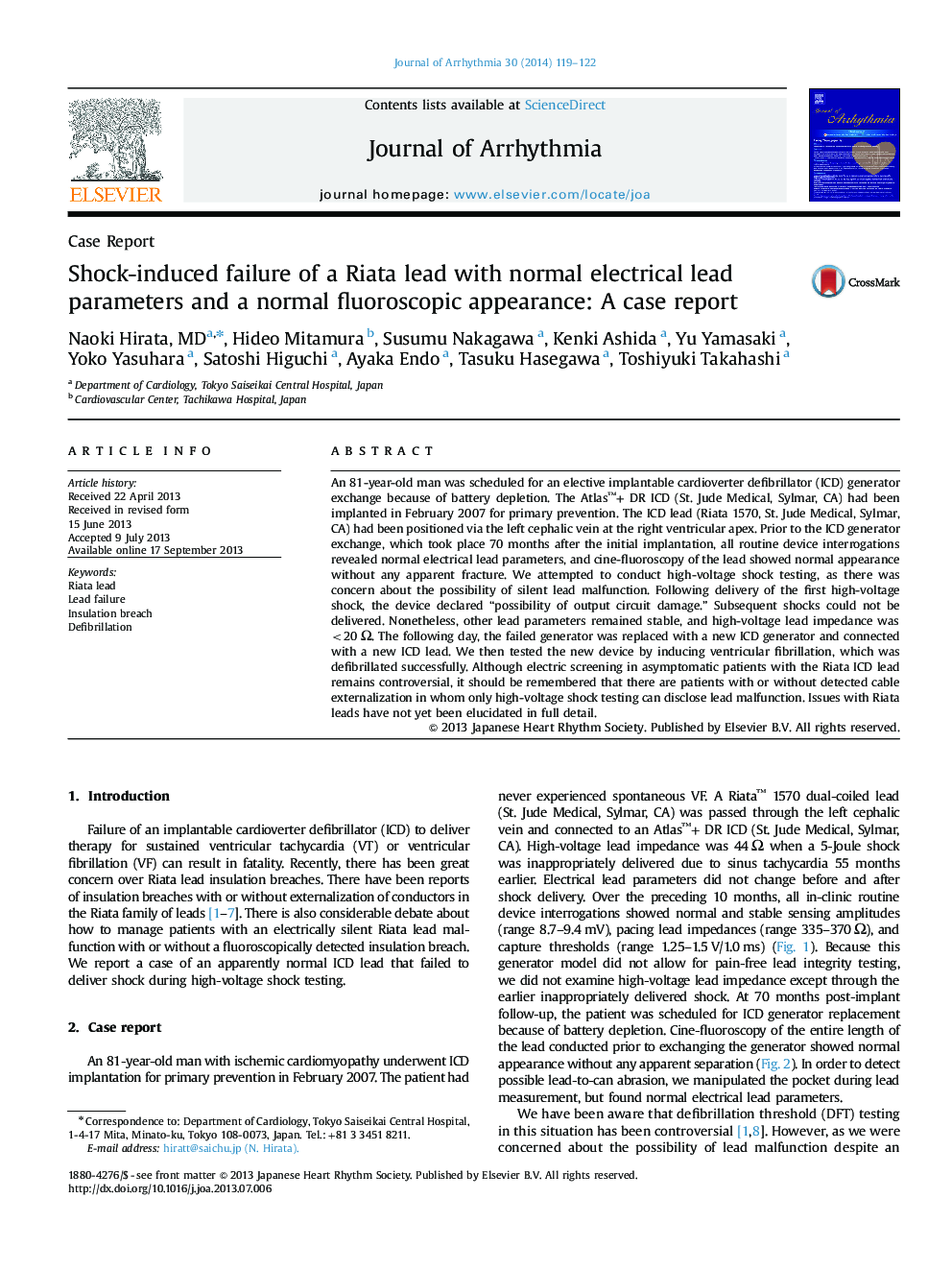| Article ID | Journal | Published Year | Pages | File Type |
|---|---|---|---|---|
| 2957746 | Journal of Arrhythmia | 2014 | 4 Pages |
An 81-year-old man was scheduled for an elective implantable cardioverter defibrillator (ICD) generator exchange because of battery depletion. The Atlas™+ DR ICD (St. Jude Medical, Sylmar, CA) had been implanted in February 2007 for primary prevention. The ICD lead (Riata 1570, St. Jude Medical, Sylmar, CA) had been positioned via the left cephalic vein at the right ventricular apex. Prior to the ICD generator exchange, which took place 70 months after the initial implantation, all routine device interrogations revealed normal electrical lead parameters, and cine-fluoroscopy of the lead showed normal appearance without any apparent fracture. We attempted to conduct high-voltage shock testing, as there was concern about the possibility of silent lead malfunction. Following delivery of the first high-voltage shock, the device declared “possibility of output circuit damage.” Subsequent shocks could not be delivered. Nonetheless, other lead parameters remained stable, and high-voltage lead impedance was <20 Ω. The following day, the failed generator was replaced with a new ICD generator and connected with a new ICD lead. We then tested the new device by inducing ventricular fibrillation, which was defibrillated successfully. Although electric screening in asymptomatic patients with the Riata ICD lead remains controversial, it should be remembered that there are patients with or without detected cable externalization in whom only high-voltage shock testing can disclose lead malfunction. Issues with Riata leads have not yet been elucidated in full detail.
